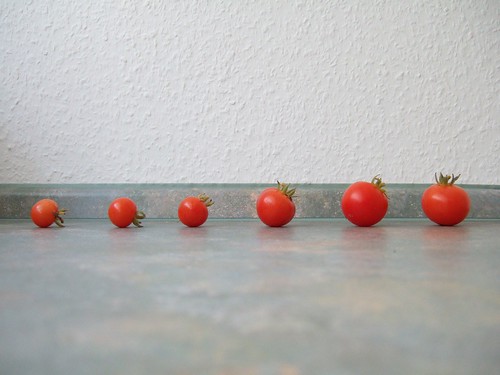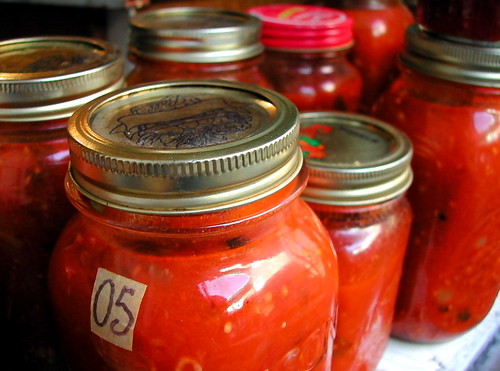
I picked up a copy of Content Rules by Ann Handley and CC Chapman and could not put it down. The books shares the secrets to creating good content on social channels that engages your audiences. They offer principles, how-to steps and tips, and case studies.
My favorite chapter is “Reimagine: Don’t Recycle: Anatomy of Content Circle of Life.” Using a plant life cycle as a metaphor, they offer a framework for how to think about content that is life-giving, but also more efficient to produce.
Having a robust content strategy that can feed multiple channels – web site, print, email newsletter, social media outposts, and now mobile – is critical to success. But, how to manage all that if you work for a smaller nonprofit where there may not be a full-time staff person devoted to content creation. The framework outlined in the book is especially useful for smaller nonprofits as well as larger ones.
Here’s summary of the key ideas:
Avoid A Once and Done Approach, Think Of Your Content As Pieces of A Larger Whole

Before running off to create content, it requires a mind shift. Nonprofits need to think of the content they hope to create as expressions of a single bigger idea or theme. Or alternatively, if your organization is starting with something larger, like a research paper or an entire season for a performing arts program, think about how to create smaller chunks of shareable content. Many nonprofits are more used to thinking of content as a single campaign.
It Takes A Whole Organization and Ecosystem To Create Good Content

The book reminds us that creating content should not fall on the shoulders of one person or department. It is critical to include the voice of everyone, not just public relations or marketing. This is especially useful for nonprofits that want to be networked nonprofits where everyone in the organization is using social media to engage with audiences around the organization’s mission.
Having an ecosystem is also important or a regular schedule or wrapping your content strategy around an editorial calendar. For organizations that museums and performing arts organizations, this is an easy and natural extension of their programming. The part that requires capacity is how an organization can effectively recycle its content. The book warns that it should not be an afterthought, but more intentional and suggests that content be “reimagined.” It’s like leaving bread crumbs in the woods or “atomizing” as Todd Defren describes.
Here’s an example from the Metropolitan Museum of Art. On Facebook, they post an Artwork of the Day which is a simple reimagining of the content on their site about objects in their collection. They’re using the same source material, but reaching difference audiences.
The Practice of Creating Good Content
Before you start developing content, you need to know your overall objective and the audience. From there, you brainstorm the big idea or theme and identify our ecosystem.
1. Inventory and Organize Existing Content Into A Simple Spreadsheet
They suggest that you begin with an content inventory looking at what you may have already created that can be useful so you don’t have to start from zero. A simple spreadsheet with title and url organized by categories, themes, messages, or topics. Get rid of the obsolete stuff, and keep the evergreen stuff.
2. Create A Publishing Schedule
This is also called an editorial calendar. They suggest thinking about your content as: 1-7-30-4. No this isn’t a lottery number. It’s the frequency of publishing.
1=Daily: Tweets, Facebook updates, responses to comments
7=Weekly: A series of blog posts, event photos, updates to your web site
30= Monthly: A video, podcast, e-mail newsletter, flyer, a more detailed or longer blog post, a case study, etc.
4=Quarterly: This could be a research paper, an e-book of your content from blog posts distributed as pdf, a video series, a special issue of your enews letter
3. Start with Small Chunks
Starting with small chunks is less overwhelming and may be easier for smaller organizations. Also, starting small allows for testing to gauge audience reaction to material before you invest more time in the material.
4. Variety Is Important
Content should not be all the same size or format. They suggest mixing the lengths, formats, and media. Think text and video and photos and powerpoint. Mix longer posts with shorter posts. Mix evergreen with time sensitive.
5. Learn How To Repurpose
The art of repurposing is very useful if you are trying to reach different audiences. You don’t need to create all new content for each one. You can tailor your content by tweaking the title, inserting different examples, and revising the framing at the beginning.
6. Bust Your Content Silos
They suggest busting silos. Content silos are formats. If you have a newsletter article, run it on the blog. Think about bundling your content across different channels. Or, alternatively, if you have longer content pieces, say a white paper or longer video, create a “chop shop” where you cut it into smaller chunks.
I’d also add measurement to this list – think about how you can best gather data to make decisions about improving your content strategy – whether it be blog content or Facebook – most definitely your spreadsheet will include lots of tabs for a/b testing or ways to measure you content performance.
Content Rules is filled a lot more useful guidelines and tips for creating great content for your nonprofit, with specific chapters on webinars, blogs, e-books, white papers, case studies, video, podcasts, and photographs. It also includes big picture principles for identifying your audience, storytelling, and micro-content. If you’re looking for an in-depth guide on content creation for your nonprofit, this Content Rules is for you.
Beth Kanter is a consultant, author, influencer. virtual trainer & nonprofit innovator in digital transformation & workplace wellbeing.
